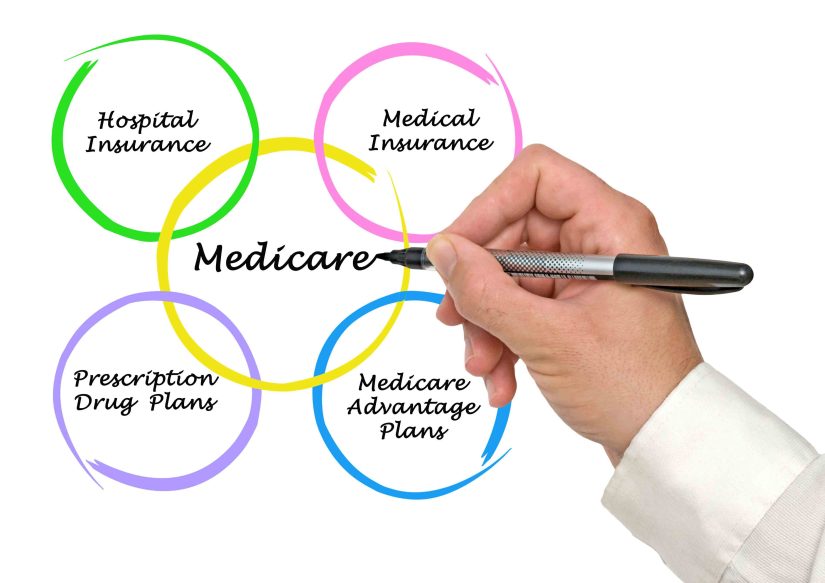Patient Resources
Blog

October 10, 2017
Decoding Medicare Advantage Plans: Illinois Resources Included
Making sense of Medicare isn’t easy. Parts, A, B, C, D; HMOs; PFFS plans; SNPs. Navigating the system can feel like learning to code… blindfolded… with one hand tied behind your back. The point is, it can be overwhelmingly complicated. But at MD at Home one of our goals is to make quality healthcare easier […]
Read More »
September 12, 2017
What Is an Advance Healthcare Directive?
No one wants to think about the likelihood of unfortunate events. Death, accidents, illness – we avoid these topics like the plague (both literally and figuratively). Why? Because they make us sad, because they make us uncomfortable, because sometimes superstition gets the best of us and we don’t want to tempt fate. But as difficult […]
Read More »
August 16, 2017
The Golden Age of House Calls and Home Physicians Returns
In 1930, house calls were standard practice for physicians, accounting for approximately 40 percent of patient visits. By 1950, this number had fallen to 10 percent, and by 1980, only about 1 percent of patient visits happened in the home. But as they say, everything old is new again, and with the coming demographic changes, […]
Read More »
July 6, 2017
Diabetes and Depression: Managing Physical and Mental Health
Diabetes and depression can each be conditions with devastation consequences on their own, let alone when a single individual suffers from both. Often times, the symptoms of one can exaggerate and accelerate the symptoms of the other, but fear not! There are a few simple steps you can follow to alleviate the symptoms and prevent […]
Read More »
July 3, 2017
A Letter to Our Patients
At MD at Home, our primary goal is to get you the best possible care. For many, this means not only treating immediately apparent symptoms and conditions but also treating the root causes of those symptoms. Our focus on preventative care honors our promise to keep patients out of the hospital, preventing costly readmissions. Welcome […]
Read More »June 1, 2017
Healthcare Resources: Industry News Roundup
We live in the Information Age, but with so much information available, it can be difficult to sort through what’s worthwhile and what’s not. Bookmark this page and check back often to gain valuable insight into research, healthcare policy changes, and more. Each month we’ll post articles and links from around the web with information […]
Read More »
April 26, 2017
Pressure Ulcers: A “Never Event” with Devastating Outcomes
Despite being deemed as “Never Events,” Pressure Ulcers (aka bedsores) continue to plague hospitals and homebound patients across the country. Understand what you can do to prevent the occurence of pressure ulcers and conform to Medicare guidelines. Never Events. Serious name. Serious incidences. Coined by Dr. Ken Kizer, former CEO of the National Quality Forum (NQF), the […]
Read More »
April 26, 2017
How to Recognize the 4 Stages of Pressure Injuries
Pressure Injuries can develop quickly and often add a layer of complication to already complex medical conditions. Read more to learn how to identify and diagnose patients with stage I, II, III, and IV pressure injuries. Have you ever heard the expression, “When you’re green, you’re growing. When you’re ripe, you rot.”? Well, picture what […]
Read More »
April 24, 2017
Diabetic Care Plans: Treating Diabetes in the Home
Diabetes is the second most popular diagnosis responsible for discharging patients into home care. The American Diabetic Association has put together a comprehensive plan of action and template for managing the care of diabetic patients in the home, the highlights of which we’ve re-appropriated below. Diabetic Care Plans As the fee-for-service model comes to an […]
Read More »
April 24, 2017
Medicare Open Enrollment: 7 Essential Tools for Understanding 2017 Medicare Enrollment
If you’re reading this in October, Medicare Open Enrollment is beginning again, and for many, that means changes to your healthcare plan. Even if you’re already a Medicare patient, there are numerous plans that change or simply stop existing each year, so it’s important to stay up to date with Medicare changes. The 2017 Medicare […]
Read More »- 1
- 2
